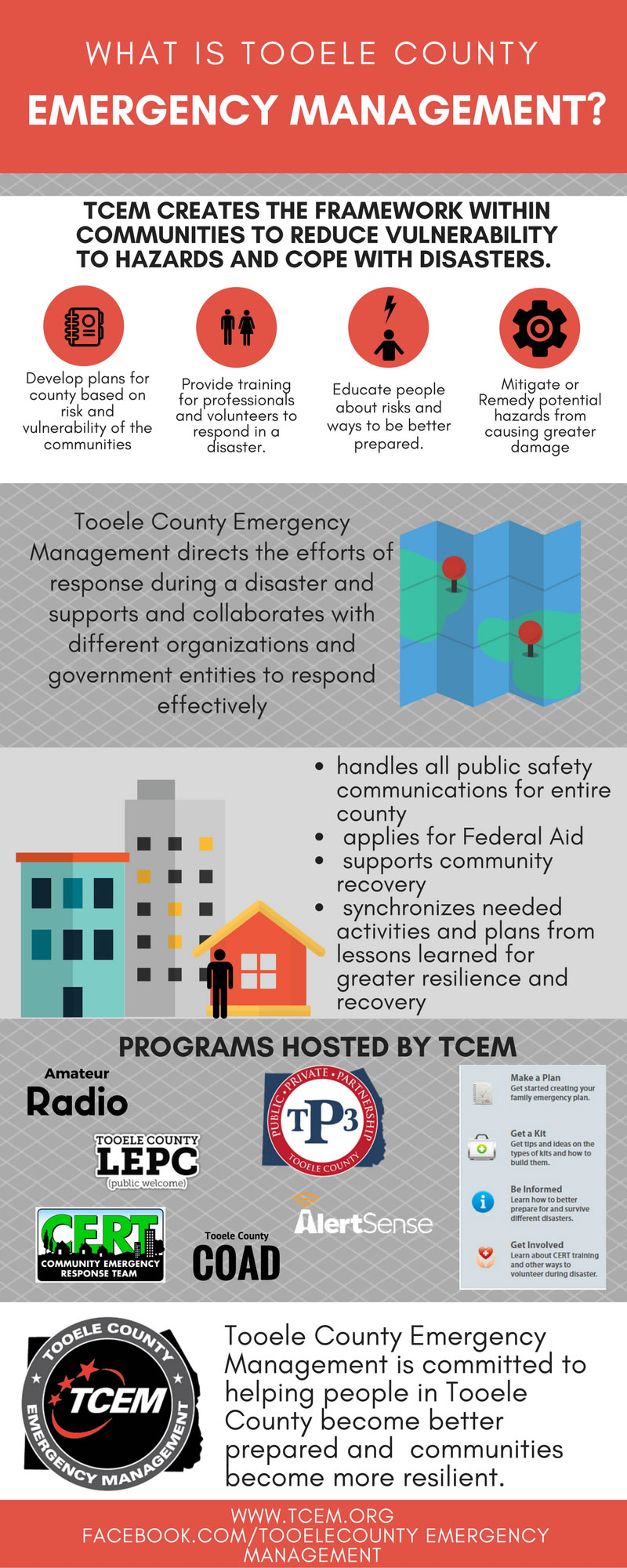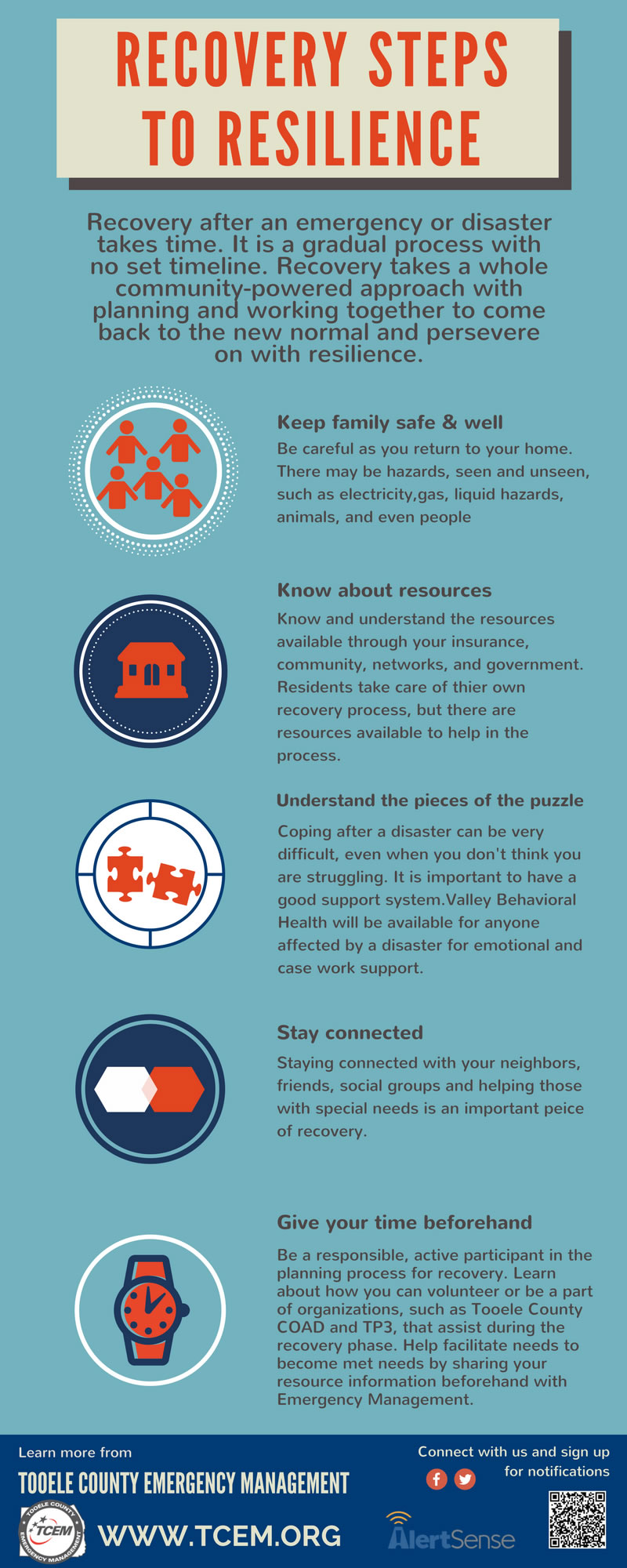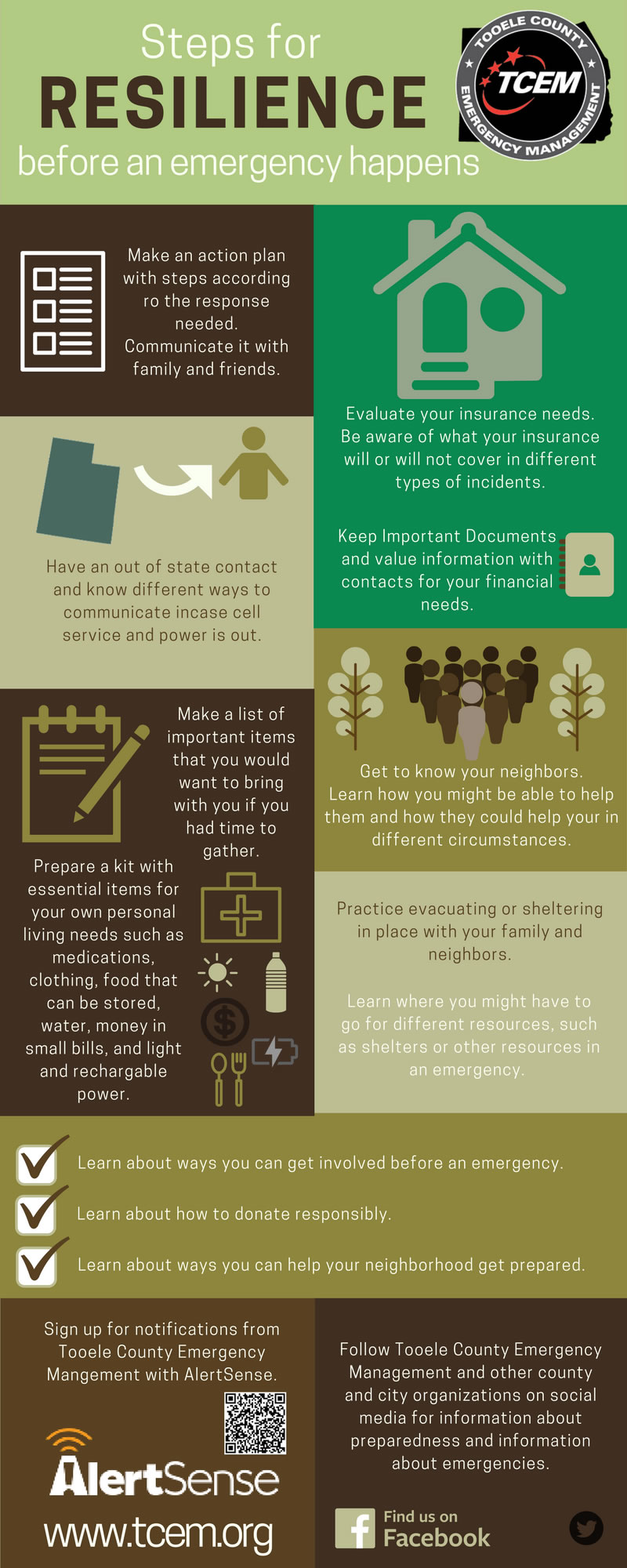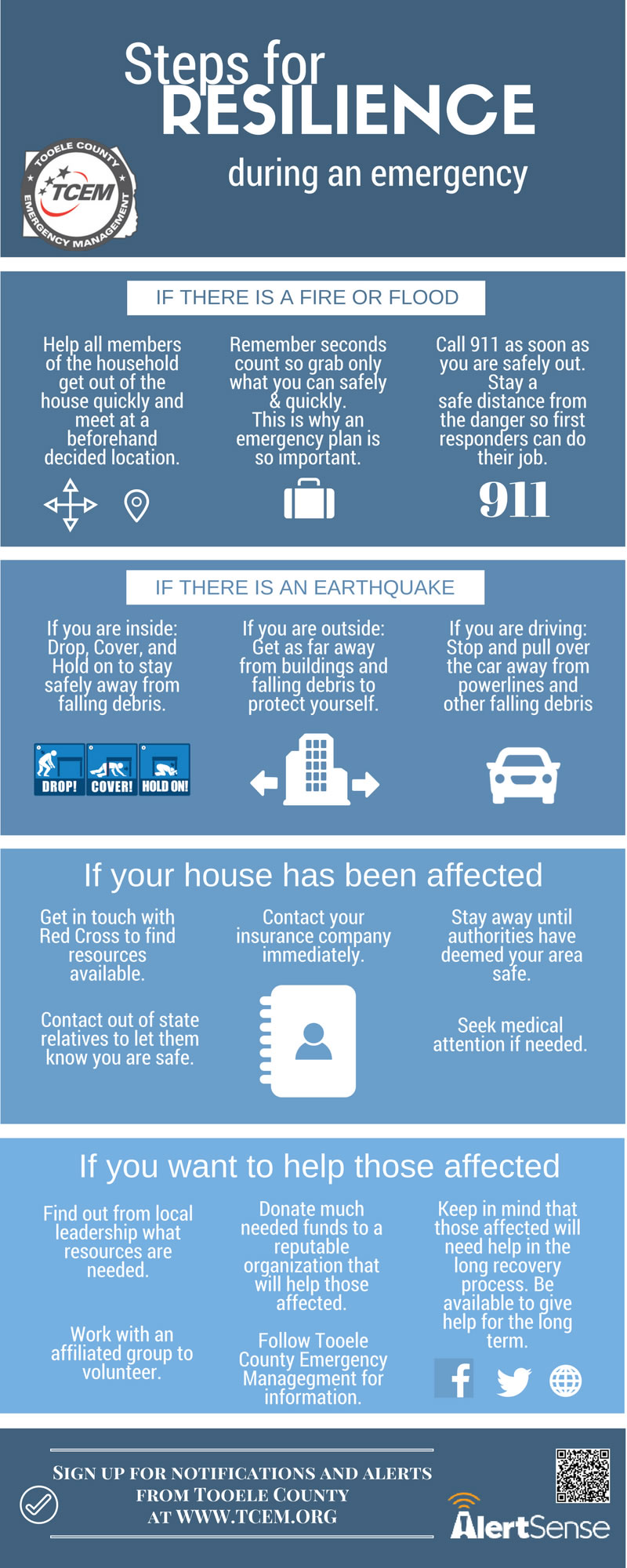Family Disaster Plan
Family Disaster Plan 5 Steps to Preparedness
All of Emergency Management

Recovery Steps to Resilience

Steps for Resilience before an Emergency happens

Steps for Resilience during an Emergency

These are elements that should be included in your family disaster plan:
- Know Protective Actions. Make preparations to evacuate or shelter-in-place if instructed to do so. Also teach family members to Drop, Cover, and Hold On in the event of an earthquake.
- Designate two Family Meeting Places. One meeting place should be outside your home to account for each family member in case there is a fire or earthquake. The other meeting place should be outside your neighborhood so you can reunite with family members that are separated at the onset of an emergency or disaster situation.
- Conduct a Home Hazard Hunt to find and mitigate any potential dangers during an earthquake. Look for heavy objects on high shelves that can be moved lower, top heavy furniture that can be fastened to the wall, the water heater which should be fastened to the wall. Consider placing child-proof locks on kitchen cabinets.
- Designate an Out-of-State Telephone Contact to call if your family is separated in an emergency. Everyone should know who the person is and know that person’s telephone number. Local circuits need to be reserved for emergency response and they will tend to be overwhelmed sooner than long distance circuits.
- Place Emergency Phone Numbers by the phone and in your children’s backpacks. Include your out-of-state telephone contact, Poison Control numbers, and location of meeting places.
- Be familiar with the names of roads designated as Evacuation Routes. If instructed to evacuate: don’t panic, take your disaster supply kits, and follow instructions. Be flexible in case your predetermined evacuation route is blocked or closed.
- Keep your cars’ Gas Tanks at least Half Full.
- Know how you will Receive Emergency Messages. Heed, listen to and follow instructions given over the sirens, tone alert radios, highway message boards, Emergency Alert System, police vehicle loud speakers, telephone calling trees, and social media (Twitter & Facebook).
- Have and know how to use a Fire Extinguisher. Remember the acronym PASS. Pull the locking pin, Aim the nozzle, Squeeze the handle and Sweep at the base of the fire. Don’t attempt to fight fires larger than a big garbage can. If the fire is too big, get out of the house and call 911 from another phone.
- Know where and how to Turn Off Gas, Water and Electricity, if necessary. Only turn off the natural gas if you suspect there is a leak. If you can visibly see a break in the line or can smell gas, of if there is already a fire in the house then turn the valve on the gas meter a quarter turn.
- Have Disaster Supply Kits for each member of your family. Remember to personalize the kits according to their individual needs.